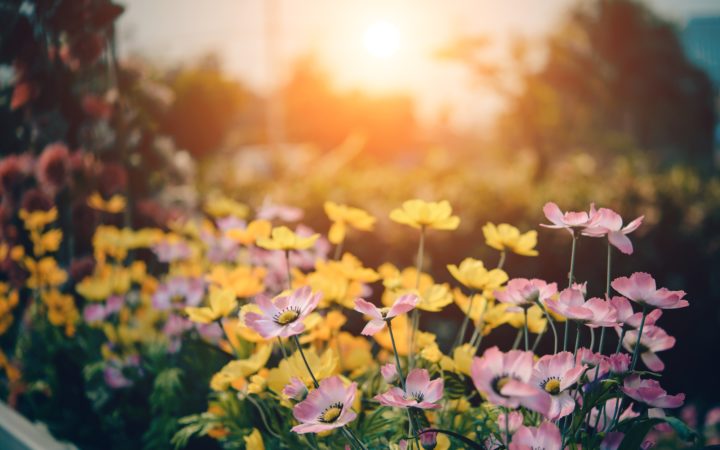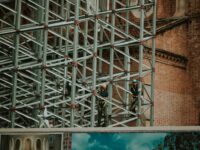You just bought your home, and the backyard is huge. This is exciting as you have so many different ideas on how to approach your designs. However, before you go about just buying and building the yard of your dreams, there are a few things that you need to consider. Here are 6 tips to help you plan your landscape design.
Factor in Your Budget and the Surroundings
Before you begin creating any sort of plans, layouts, or designs, you need to begin looking into your project through a financial lens. Having a budget in mind allows you to make decisions that make sense, choosing designs, and make adjustments that fit your project, and changes in response to those adjustment needs. Your landscape designs and ideas will have limitations based on your budget, as well as the physical environment. If the terrain is uneven or full of trees and bushes, you will need to either find ways to incorporate these surroundings or address them with landscaping companies to alter the terrain. Also, if your property is on the waterfront, you will want to factor this in and make sure that you work with someone like Shoreline Erosion Control in order to create a design that both looks good and keeps your property safe from the water. From here, you can create a goal with what you have to work with.
Plan the Layout
Once you have an idea in mind, you can start creating sketches and layouts of the landscape you are planning to work on. Even if you are not sure about measurements, you want to get a general idea of what you have to work within terms of the size of the landscape, the type of greenery and environment, what fits and what doesn’t.
Drawing things out will allow you to visualize what you have space for and how to create different spaces for relaxing, gardening, eating, hosting, or whatever it is that you plan on utilizing your spaces for. Once you have a general idea of how everything should be mapped out, you can start looking into more detail and have a general direction of how to approach your landscaping project. It can be helpful to consult with landscaping companies during this planning stage to get professional insights and suggestions.
Realistic and Functional Design
When you establish the budget you have and the surroundings in terms of what type of landscape you will have to work with after any changes have been made, you can start getting into further detail about specific building materials, narrowing down things like the type of wood you are using or the fauna you want to plant. You will need to consider everything in terms of costs, labor, and function of your design.
You want to ensure that your ideas will translate to reality, and be functional and usable. During these design phases, you should consult landscapers and professional designers to ensure that anything you build is going to hold up, or that anything you design will create a better experience, as opposed to a clunky or awkward setting that could result in your landscape feeling more like an obstacle course.
Prioritize Your Plants
Any outdoor space will need to incorporate some sort of shrubbery, trees, or plants. Of course, you can completely clear out the space of any such plants but you lose a significant factor of your landscape. Plants allow you to decorate your yard, patio, or garden without having to use physical assets or decor to fill empty space. Consider certain important factors to your plants and gardens, however, as you will want to ensure they are located somewhere that gets adequate sunlight and can be watered easily.
These are living things, and you need to tend and care for them, and this is important in how you incorporate them into your landscape design. Make sure that you have included a faucet or water source nearby to allow you to tend to your gardening needs, as well as considering the inclusion of storage space like a shed to house your tools, mowers, soils, fertilizers, and whatever else you will need for your lawn and garden care.
Lighting
Another major factor that will come into play as you create your landscape design is the lighting aspect of it. There are so many different ways you can create and build a yard or landscape to your liking, but if you plan to spend time there in the evenings, it’s essential to illuminate your landscape with style and function. Your lighting choices will vary depending on the layout of your space and the types of activities you enjoy on your property.
If you have a dining setup outside near the house and are planning on hosting barbecues or gatherings, you should be looking at supplying a good enough light source to be able to see each other and enjoy each other’s company. One fun design that the Landscape Lighting Experts recommend for garden settings is hanging lights that stretch from your home outwards. The key importance you want to highlight is the ability to illuminate your space as best as possible. This ensures that any party or get-together doesn’t end when the sun goes down.
Walkways and Paths
One of the most important design choices for any landscape is the paths and walkways in and around your yard. These are important to ensure the safety of your family and guests that you have in your home, but also creates a flow to your environment. You want to create paths that make sense to you and others that will visit. Highlighting what paths people will take around your landscaped space ensure that people are not walking on your lawn and ruining your grass or through your shrubs.
If you own a pool, you don’t want to create a dark space that attracts and holds heat which would burn bare feet. You want to ensure that your walkways are safe from sudden elevation changes and create tripping or falling hazards and of course you want to ensure your paths are well lit. Additionally, the paths you create can be a design choice as well, changing the type of stone, wood, or whatever material you might use to design them with.
Landscaping is inclusive of many aspects that you need to consider. There are just as many ways you can design the exterior of your home as there are ways to design the interior, and ultimately those choices come down to your preferences. But even with that creativity, you want to ensure that you go about it in a safe and well-designed manner.
















